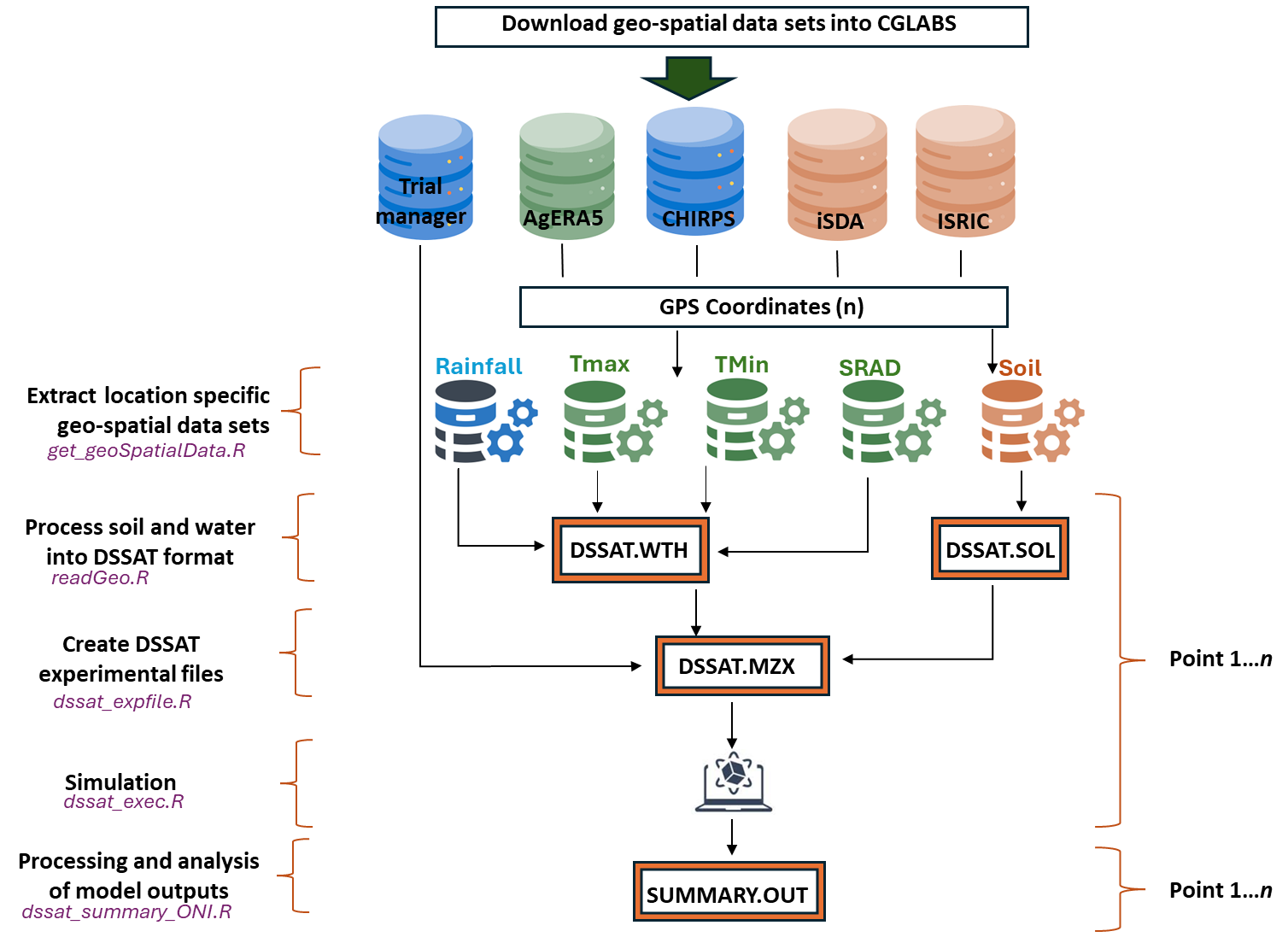Crop models as support of decision-making

The AgWise framework contributes to making farming more climate resilient. AgWise determines spatially the optimal planting dates and cultivars for different cropping systems based on soil and climate variability. Therefore, the information provided by AgWise can improve climate risk management and crop productivity in the global South. This is undertaken by coupling diverse crop models with spatial soil data and historical and seasonal forecast weather data.
Determination of the optimal planting dates and cultivars potentially increases the ability of a crop to maximize the available resources for crop growth and development and ultimately increase crop yield. Specifically, an appropriate planting time avoids early, mid, or end-of-season dry spells. The crop, therefore, reduces climate hazards during sensitive phases of growth and development, such as germination, flowering, and yield formation, potentially leading to lower yield. Similarly, different varieties can have contrasting responses to varying seasonal conditions. Under drought, short-season varieties can have more yield stability but relatively lower yield. In contrast, long-seasoned varieties can have high yields under high rainfall conditions but greater yield variability and low yields under low rainfall conditions. AgWise, therefore, defines variety suitability under different season types.
The AgWise framework is utilized to determine the potential areas where the production of certain crops is optimal. In addition, AgWise is a tool that provides agronomic recommendations that contribute to reaching the crop’s potential in different environments. Policymakers and researchers can, therefore, make interventions to close the yield gap.
